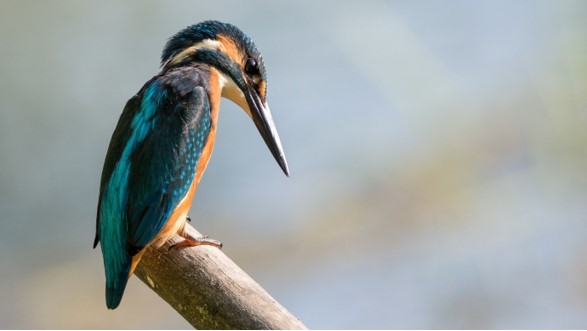Got a passion for both animals and photography? Wildlife photography is a fulfilling area of photography to work in. With live moving subjects, animals in their natural habitat and the chance to work all over the world – what more could you want?
Wildlife photography is a specialist area of photography that focuses primarily on taking photographs, videos, and recordings of wild animals. This niche photography area not only provides artistic and creative value to the world of animals but also makes valuable scientific contributions too. Wildlife photography is of huge importance for raising awareness, research, education, and conservation purposes.
Wildlife photographers contribute hugely to the work of documenting and recording different animal species, particularly those that are at risk of extinction or under threat. It can be a very thrilling, fulfilling, and creative role, perfect for anybody who wants to combine their creative flair for photography with their love for animals!

Things to consider
Wildlife photography roles can take you all over the globe. It is therefore advisable for wildlife photographers to be aware of the importance of ethical tourism and making attempts to understand the culture and language of the country or continent where they are travelling. In fact, the ability to communicate effectively with kindness and consideration to native inhabitants could make all the difference between returning home with the most amazing wildlife shots and videos or missing out completely!
When working with animals abroad, it’s imperative that you are conscious of wildlife, their wellbeing, and their natural habitats. If you’re working specifically with animals in the wild, such as a wildlife photographer, you need to make sure that your photography and videography methods don’t impact or disrupt animals in any way.
Still interested in how to get a job in wildlife photography. Keep reading to discover our top tips on breaking into the industry!
A couple of tips for getting started
So, does a career in wildlife photography sound like it’s got your name written all over it? Here are a few of our top tips to help you snap up a job in your dream role!
Build a portfolio
Employers will want to see a selection of your previous photography work and experience and the best way to demonstrate this is through a varied, high-quality portfolio. Building up a wildlife portfolio doesn’t have to be tricky, you can photograph wildlife anywhere – from animals or plants in your local area, to even approaching your local zoo as a photography volunteer. Make sure your images and visuals are high-quality, captivating images that show off your skills.
Get a qualification
Getting qualified to photograph wildlife is easier than you think. If you are serious about pursuing a career, then searching for an Ofqual-regulated qualification is a sure-fire way to get taken seriously. Not all online courses are qualifications, so be mindful when conducting your search. Online courses may appear to be a great deal, but they won’t provide you with an official, regulated qualification at the end.
The Level 3 Award in Wildlife Photography is a regulated qualification, designed for those who are pursuing a career in photography and working with wildlife.
This qualification explores digital photography, including the components of a digital camera, along with the basic controls and photographic techniques. Not only that, but the course will teach you about photo editing and postproduction. More importantly, this qualification helps you discover the best techniques for photographing different groups of animal species. And will guide you on how to capture an image that tells a compelling story through a lens.
Be versatile
Be open to using different cameras, mediums, and methods of photography to build up a varied portfolio and to ensure you are comfortable working in any photography situation. Wildlife photography can take you all over the world, so it is vital that you are comfortable and knowledgeable about the different requirements of wild animals and the impact this may have on how you photograph them. Remember – this is the animal’s natural home and habitat, so it is vital that they are photographed in a way that minimises disruption or distress to their wellbeing.
Keep looking for opportunities
Job opportunities will present themselves in all shapes and sizes. For example, if you have a talent for Wildlife Photography, then you may be interested in entering competitions.
The Wildlife Photographer of the Year is one of the most prestigious campaigns, run by the Natural History Museum. There are several categories, including The Young Wildlife Photographer of the Year. It’s always worth seeing the exhibition, which is often displayed at the Natural History Museum in London at certain times of the year.
The British Wildlife Photography Awards have been running for 10 years and are a great way for photographers to get their name noticed in the industry.
A wildlife photography opportunity (no matter how small) is still a fantastic way to get some experience for your CV and build your skills in a new environment. Check out our Animal Courses Direct Jobs Board – with weekly animal job updates, it’s a great place to start looking for wildlife photography opportunities.
Remember, for any animal job advice or queries, don’t hesitate to get in touch with one of our trained animal professionals through our homepage.


















